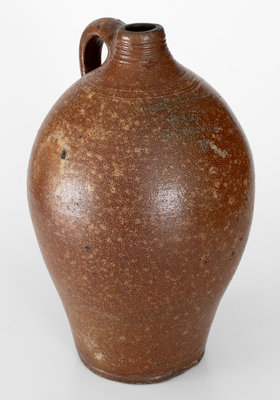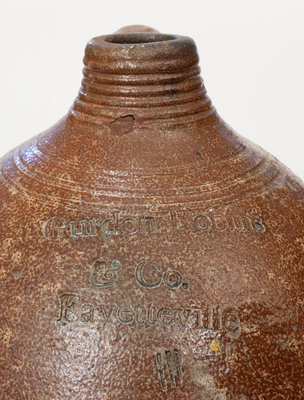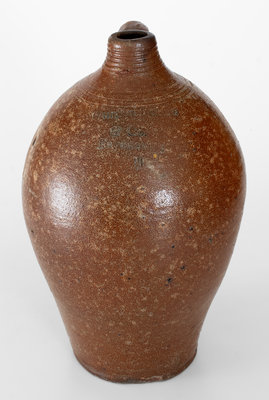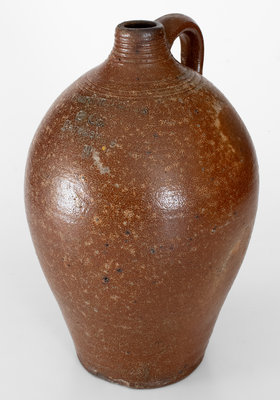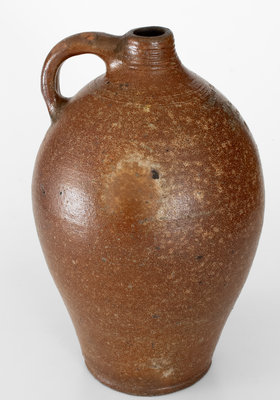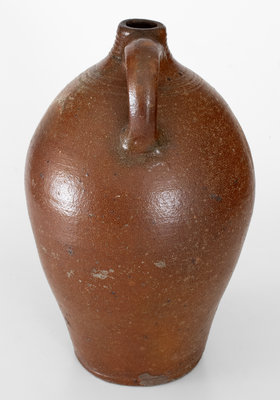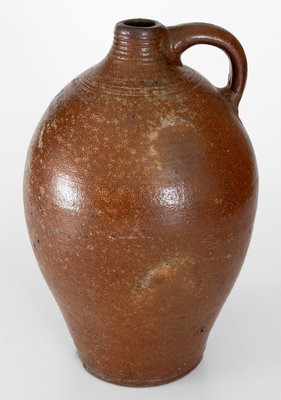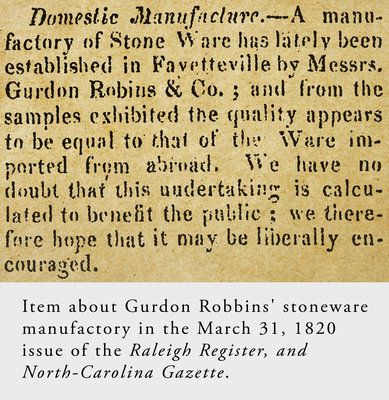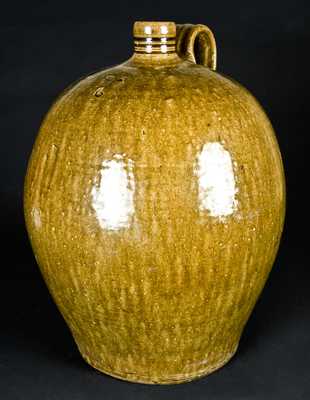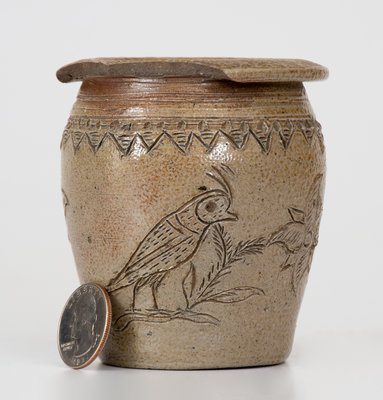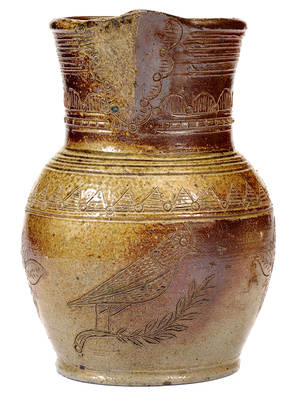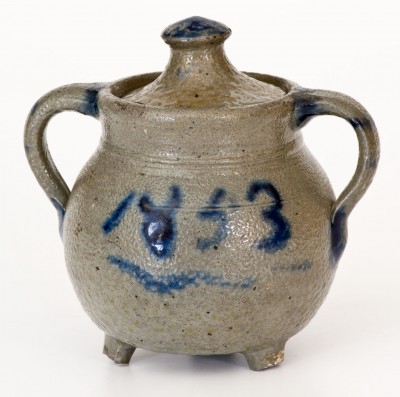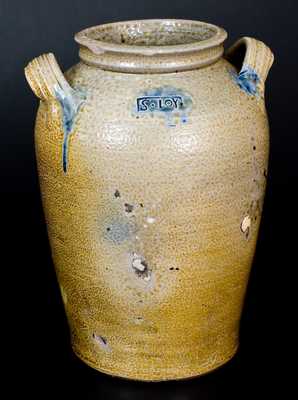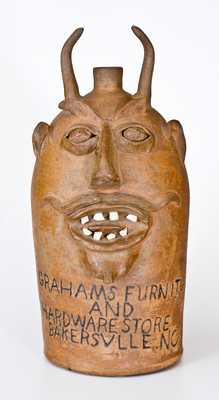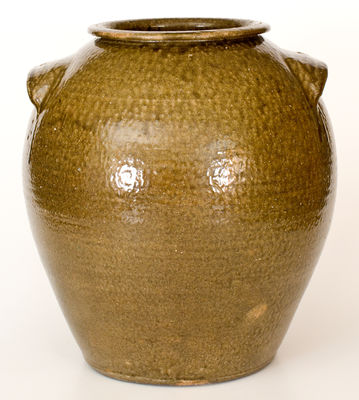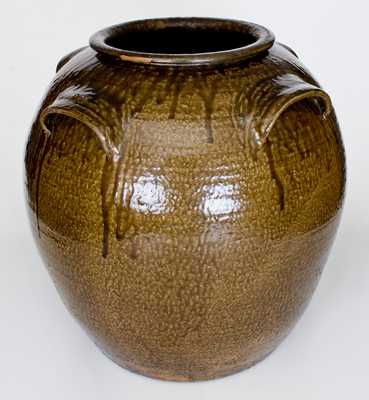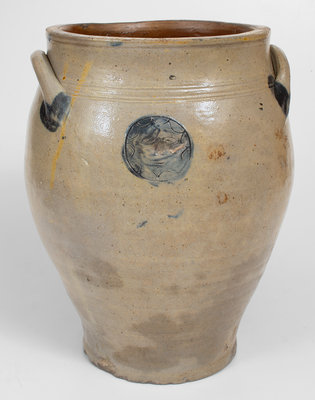Exceedingly Rare and Important Three-Gallon Salt-Glazed Stoneware Jug with Iron-Oxide Wash, Stamped "Gurdon Robins / & Co. / Fayetteville, NC," Edward Webster, Fayetteville, NC, circa 1819-1820, ovoid jug with footed base and heavily-tooled shoulder and spout, the surface dipped in a heavy iron-oxide solution and covered in a clear salt glaze. Impressed at the shoulder with the pottery mark, "Gurdon Robins / & Co. / Fayetteville," accented with light cobalt slip, underscored by the Roman numeral, III, denoting three gallons. One of a few examples of stoneware bearing this mark, this jug was made by Hartford, CT-trained potter, Edward Webster, at the Fayetteville pottery owned by merchant, Gurdon Robins, and a business partner, Timothy Savage, Jr. Like Webster, Robins and Savage were from Connecticut. Showing clear Hartford school attributes in both its form and dipped surface, this jug represents the earliest beginnings of what would become a booming salt-glazed stoneware industry in the state. The stamp found on this example is regarded as the first North Carolina stoneware maker's mark. According to Scarborough's North Carolina Decorated Stoneware: The Webster School of Folk Potters, the firm of Gurdon Robins & Co. was established in March of 1819, as recorded by the U.S. Census of Manufactures. By January 1821, Savage had evidently left the partnership (Scarborough, p. 6-8). This information dates this jug to the narrow window of production of 1819 to 1820. Few examples are known. Among the most historically significant examples of Southern stoneware that we have offered. A 3/8" hole in the jug's neck has been filled and colored. Minor roughness to spout. Some light surface wear. A 1 3/8" worn section to base on reverse. H 16 1/2".

